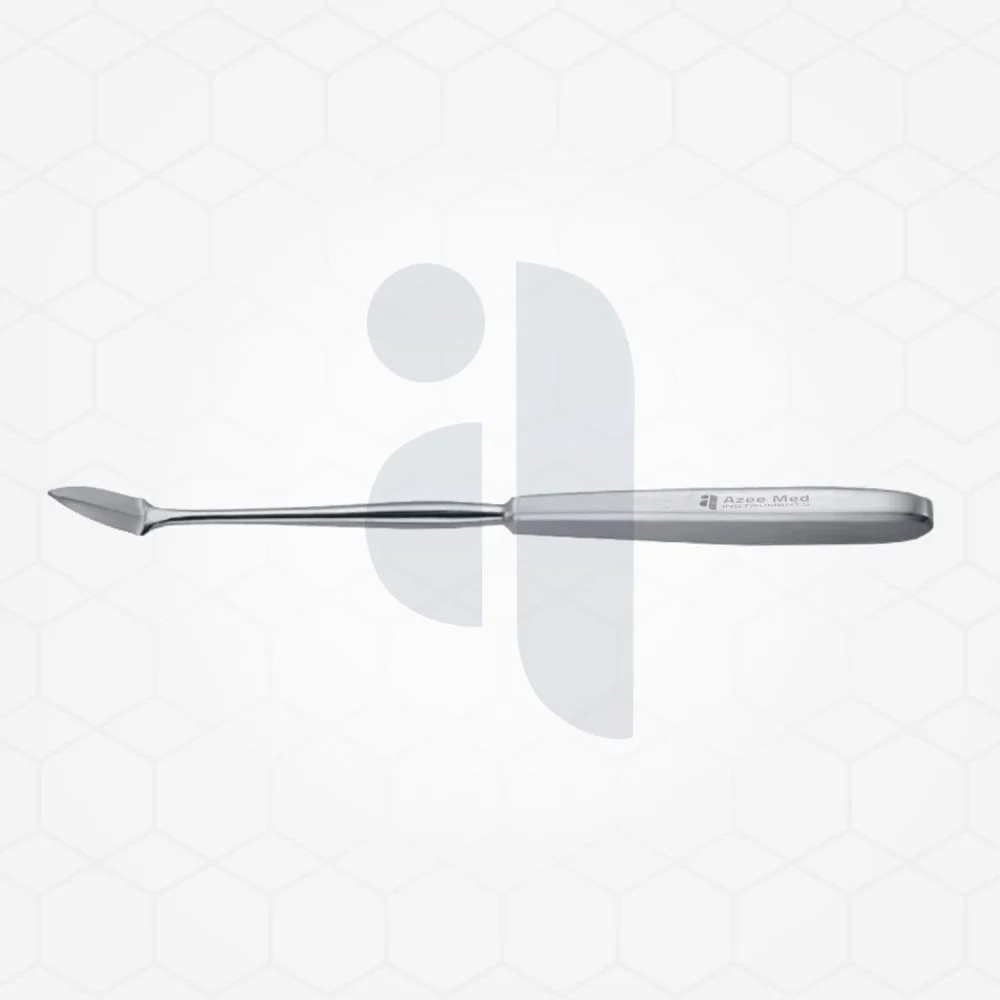A needle knife is a specialized surgical instrument used for precise incisions in delicate procedures. It is primarily utilized in endoscopic and minimally invasive surgeries, where precision and control are essential. The unique design of the needle knife allows surgeons to perform fine dissection and access restricted areas without causing excessive tissue damage.
Design and Structure
The needle knife consists of a thin, elongated blade attached to a handle or an endoscopic device. The blade is extremely sharp and narrow, resembling a fine needle, which enables precise cutting of tissues. Some needle knives are designed with an adjustable or retractable blade to allow for controlled exposure during procedures.
These instruments are commonly made from high-quality stainless steel or other biocompatible materials that ensure durability and resistance to corrosion. In endoscopic applications, the needle knife is often integrated with electrocautery capabilities, allowing simultaneous cutting and coagulation of tissues to minimize bleeding.
Common Surgical Applications
One of the primary uses of the needle knife is in endoscopic procedures, particularly in gastrointestinal (GI) and biliary surgeries. It is frequently used in endoscopic retrograde cholangiopancreatography (ERCP) to perform sphincterotomy, a technique that helps widen the bile or pancreatic ducts to remove stones or facilitate drainage. The precision of the needle knife allows surgeons to make controlled incisions in narrow anatomical spaces.
In ophthalmic surgery, needle knives are utilized for fine incisions in delicate eye tissues. Their sharp and slender design enables accurate cutting with minimal trauma, making them ideal for procedures such as cataract surgery and corneal incisions.
Additionally, needle knives are employed in dermatological procedures, particularly in microsurgery and cosmetic treatments. They assist in removing skin lesions and making fine cuts in reconstructive surgeries where precise tissue handling is crucial.
Advantages of the Needle Knife
The needle knife offers several advantages in surgical applications. Its fine, sharp blade allows for high precision, making it ideal for procedures that require minimal tissue damage. In endoscopic surgeries, its ability to perform controlled incisions in tight spaces enhances procedural success and reduces patient recovery time.
Another major benefit of the needle knife is its integration with electrocautery technology. This feature enables surgeons to cut and coagulate simultaneously, reducing bleeding and improving efficiency in procedures. By minimizing blood loss, the needle knife helps create a clearer surgical field, allowing for better visibility and accuracy.
The instrument’s design also contributes to less invasive surgical techniques, leading to reduced postoperative complications and faster healing. Compared to traditional scalpels or larger cutting instruments, the needle knife provides a more refined approach, making it an essential tool in modern surgical procedures.
Maintenance and Sterilization
Proper handling and sterilization of the needle knife are essential to ensure patient safety and maintain instrument longevity. Single-use needle knives should be disposed of after each procedure, while reusable versions must be thoroughly cleaned and sterilized according to medical guidelines. Ensuring the blade remains sharp and free from damage is crucial for maintaining surgical precision.
Conclusion
The needle knife is a vital instrument in modern surgery, providing exceptional precision and efficiency in delicate procedures. Whether in endoscopic, ophthalmic, or dermatological applications, its sharp and slender design enables controlled incisions with minimal tissue trauma. With proper use and maintenance, the needle knife continues to play a crucial role in advancing minimally invasive and specialized surgical techniques.





Comments